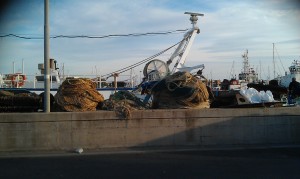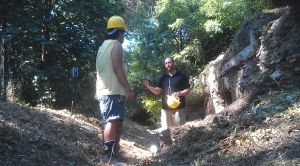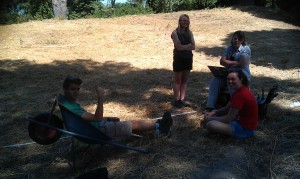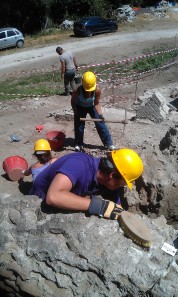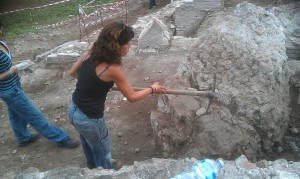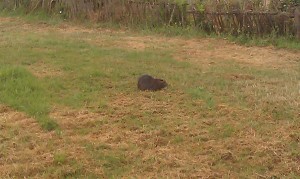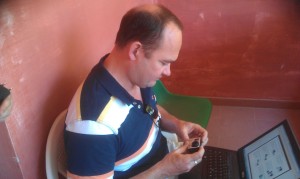Portus Field School Week Two: canals, boats and local residents
The second week of the field school started in reflective mood, with a wander down the length of the Roman canal or Fossa Traiana that still forms the principal link between the modern town of Fiumicino, the coast and the Tiber. In spite of the balmy weather and the tranquil evening, the sea was in restless mood, with the waves breakingon the breakwater, and waves channelling up the canal, one after the other, pitching the fishing boats against the edge of the jetty. The fish market was a hive of activity, and all of the boats seemed to be in port, with the nets piled on the wharf. Some interesting parallels perhaps with the port architecture that we are excavating at Portus, now some 2km inland, with its own canals and waterways now infilled by river sediment and man-made infilling.
Work on site has carried on apace, with further emphasis beyond the excavation on laser scanning with James Miles, and geophysical survey in the form of ERT with Lizzie Richley. James has been surveying the the baths of the Lanterna, and the warehouse structures along the western side of the harbour of Trajan. Lizzie has focused the ERT in the area of Building 5 to the north of the Navalia excavation. Students have been rotated in groups to experience these non-intrusive methods, giving them a grasp of the advantages and applications of the different techniques, and the integration of this work with the excavation.
In Area K a number of the rooms (12, 7) are being excavated, through layers of dumped material and occupation layers. the team in Room 12 removed a substantial block of fallen masonry, and dug down through a dump layer containing brick and tesserae, hoping to eventually expose the opus sectile floor of the room. Camilla, having planned the offending masonry block, took the first ceremonial pick blow to it.
The students have been trained in the general methods of excavation, survey and recording on site, and as the work has progressed they have been involved in drawing plans, sections and taking levels amongst other activities.
In general, the deposits on the upper part of Area K are coming down on to the floors of rooms with mosaic and opus sectile , with remnants of opus reticulatum and brick walling. The hard work will come in the next few days in resolving the northern edge of these rooms, and the possible location of walls to these rooms, overlying the earlier mole wto which the lower floor of the palace abuts.
In spite of all of the hard work, and the focus on the archaeology, it is sometimes difficult to forget the natural habitat of the surrounding parkland. In addition to the green parrots, heron, and snakes, a number of residents have found a great dwelling place along the course of the bonifica canal running from the Trajanic Basin westward towards the edge of the site. A family of coypu live close to a bridge over the canal, at least two adults and two children, seen eating vegetation on the edge of tyhe canal each morning.
A further resident has also set up his abode in the Casale on site, making his way out of the upper floor of the building only to nibble at biscuits and drink strong coffee…

